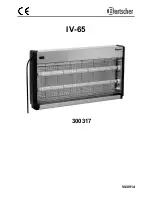
Operation
R&S
®
ATS1000
56
Instructions Handbook 1179.2983.02 ─ 01
●
USB
2.0 feedthrough [A122]
Note that this connector is USB
2.0 despite the connector in the chamber being
USB
3.1.
●
9-pin D-Sub feedthrough [A123] (pins 1 to 8)
●
RF connection via a rotary joint to feedthrough [A124] (left connector)
For details on the feedthroughs, see
.
To connect a DUT
1. If one or more control or supply cables are available for connecting the DUT, con-
nect them.
2. If an RF cable is available for connecting the DUT to your test equipment, connect
it.
Risk of RF connector and cable damage / torque recommendations
Excessive tightening of coaxial RF connectors can damage the cables and connectors.
Too weak tightening causes inaccurate measurement results.
Always use a torque wrench suitable for the connector type and apply the torque speci-
fied in
application note 1MA99
, which is available on the internet at
. It provides additional information on the care and handling of RF con-
nectors.
For RF connectors, we recommend applying the following torque limits:
●
90
N
·
cm
for
PC
connectors (3.5
mm
/ 2.92
mm
/ 2.4
mm
/ 1.85
mm)
Never use a standard open-end wrench. We offer torque wrenches for various connec-
tors. For ordering information, see application note 1MA99.
7.6
Operating the Positioning System
Figure 7-10: NCD controller for elevation positioner and azimuth turntable
1 = [START] button for starting positioner movement
2 = [REF] button for referencing the turntable
3 = Control element "New Angle AB1" (antenna boom, elevation positioner arm)
4 = Control element "New Angle TT" (turntable)
5 = Standby button
Operating the Positioning System
















































